For Punekars, Ganeshotsav is theatre, music, history and devotion stitched into one grand celebration. At the heart of it are the live dekhavas—dramatic stage shows mounted by mandals across the city, where mythological, historical and social stories come alive with remarkable creativity. Each dekhava is a spectacle – sets of saints performing miracles, warriors striking down enemies, and contemporary themes like water conservation or women’s empowerment taking centre stage. Here are some places that warrant a visit for this.
Where
: Shivajinagar Sarvajanik Ganeshotsav Mitra Mandal
What
: Raktabij Vadh
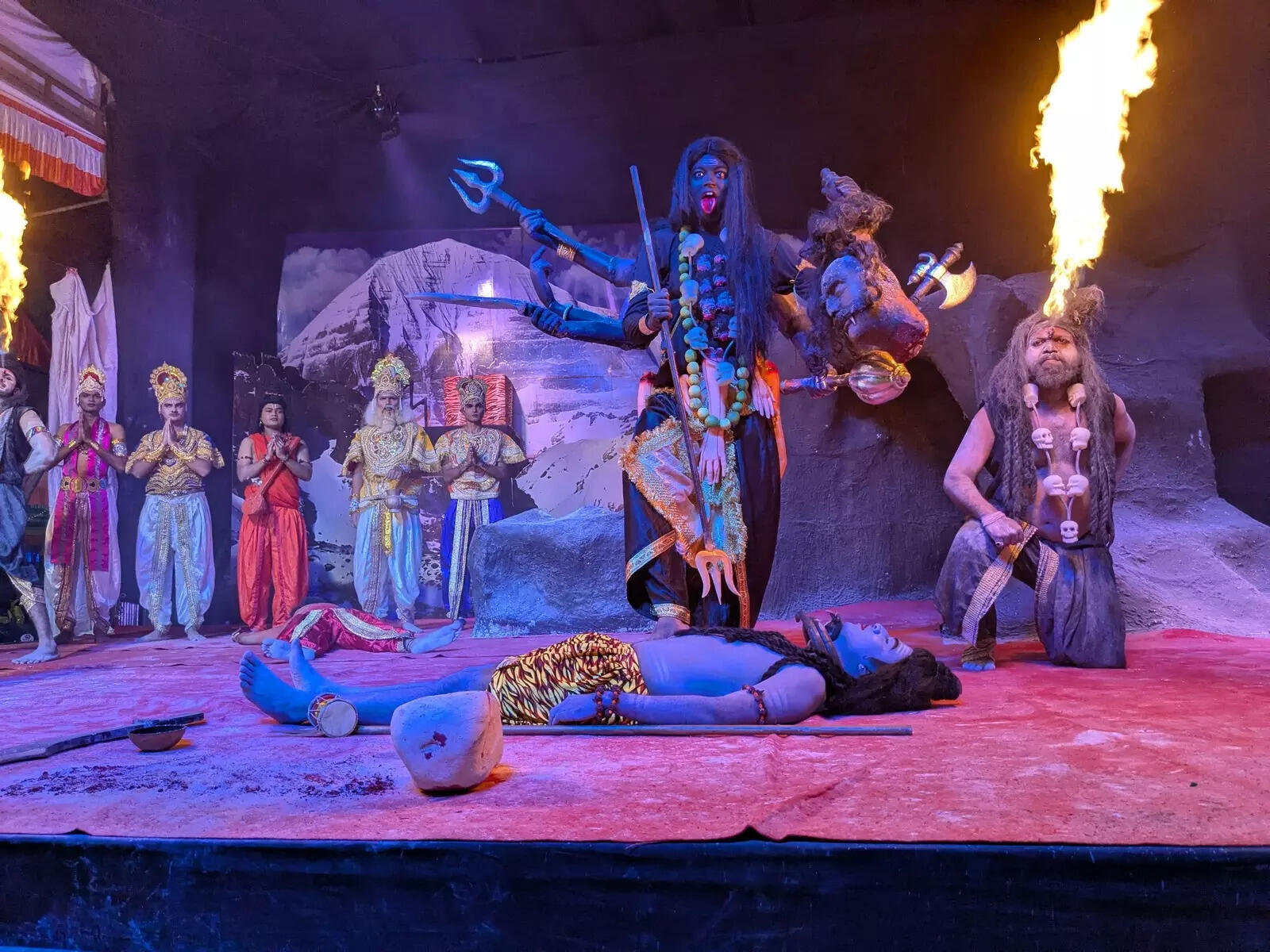
Dekhava depicts the story of Raktabij rakshas’ defeat against Kali Mata
Marking its 75th year, the mandal stages the epic retelling of Raktabij Vadh. The demon multiplies with every drop of blood, until Goddess Durga transforms into her fierce avatar of Kali to vanquish him. “We wanted to give a platform to young actors,” says Ajit Jadhav, from the mandal. With 40 performers, a ₹30 lakh budget, and 9–10 shows a day, the production is a festival highlight.
Where
: Peru Gate Mitra Mandal, Sadashiv Peth
What
: The attack on Shaista Khan
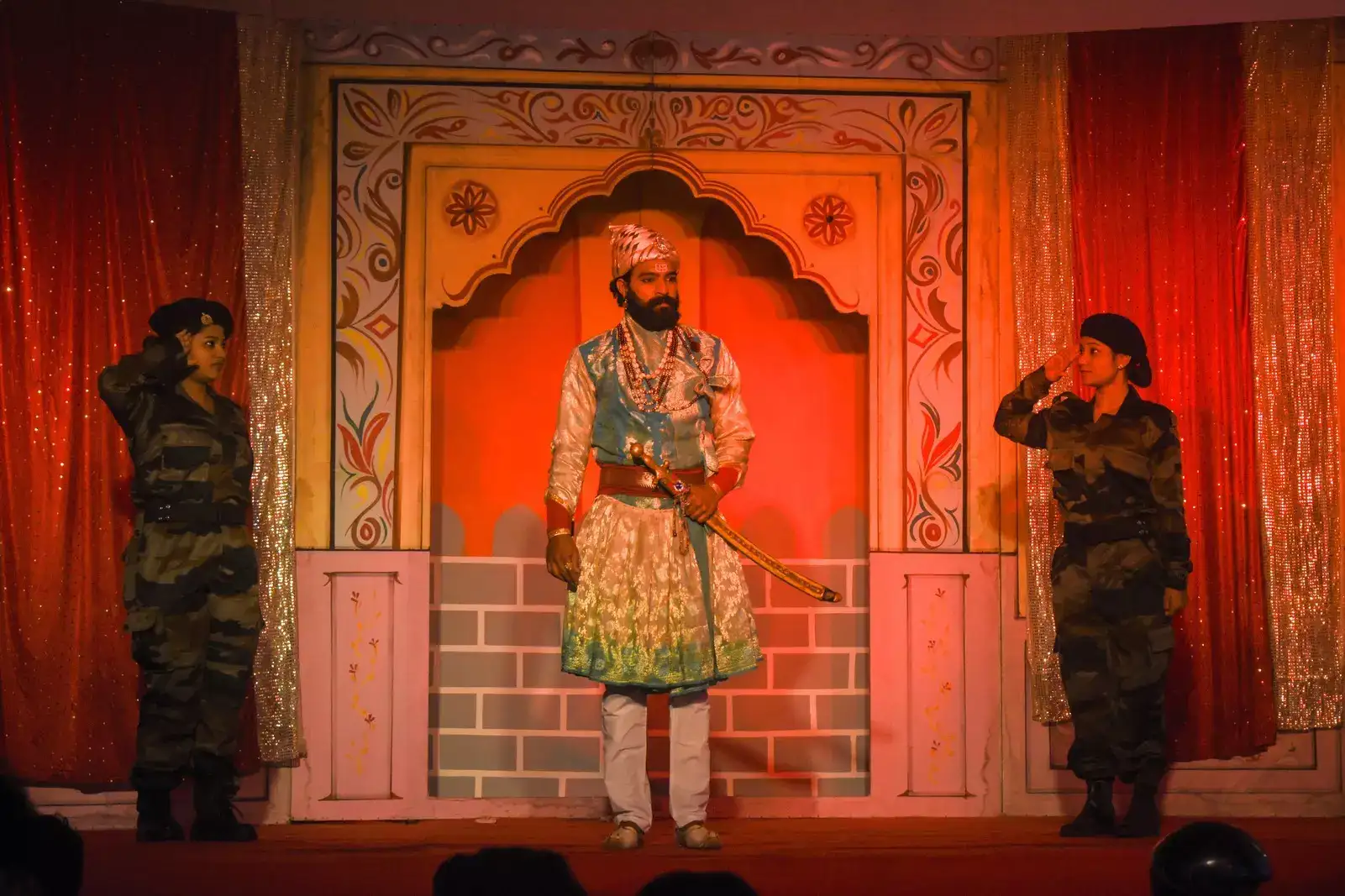
Perugate Mitra Mandal dekhava
This retelling of Chhatrapati Shivaji Maharaj’s daring attack on Shaista Khan brings history alive. “We rehearsed for over 10 days, with all of us handling everything from writing to production,” says actor Parag Jagtap. Director Anand Snehchandra adds, “Preparations begin two months in advance. The mandal selects the story, and with a 50-member team, I handle writing and direction.”
Where
: Nimbalkar Talim Mitra Mandal and Digvijay Mitra Mandal, Sadashiv Peth
What
: Sambhaji Maharaj’s life
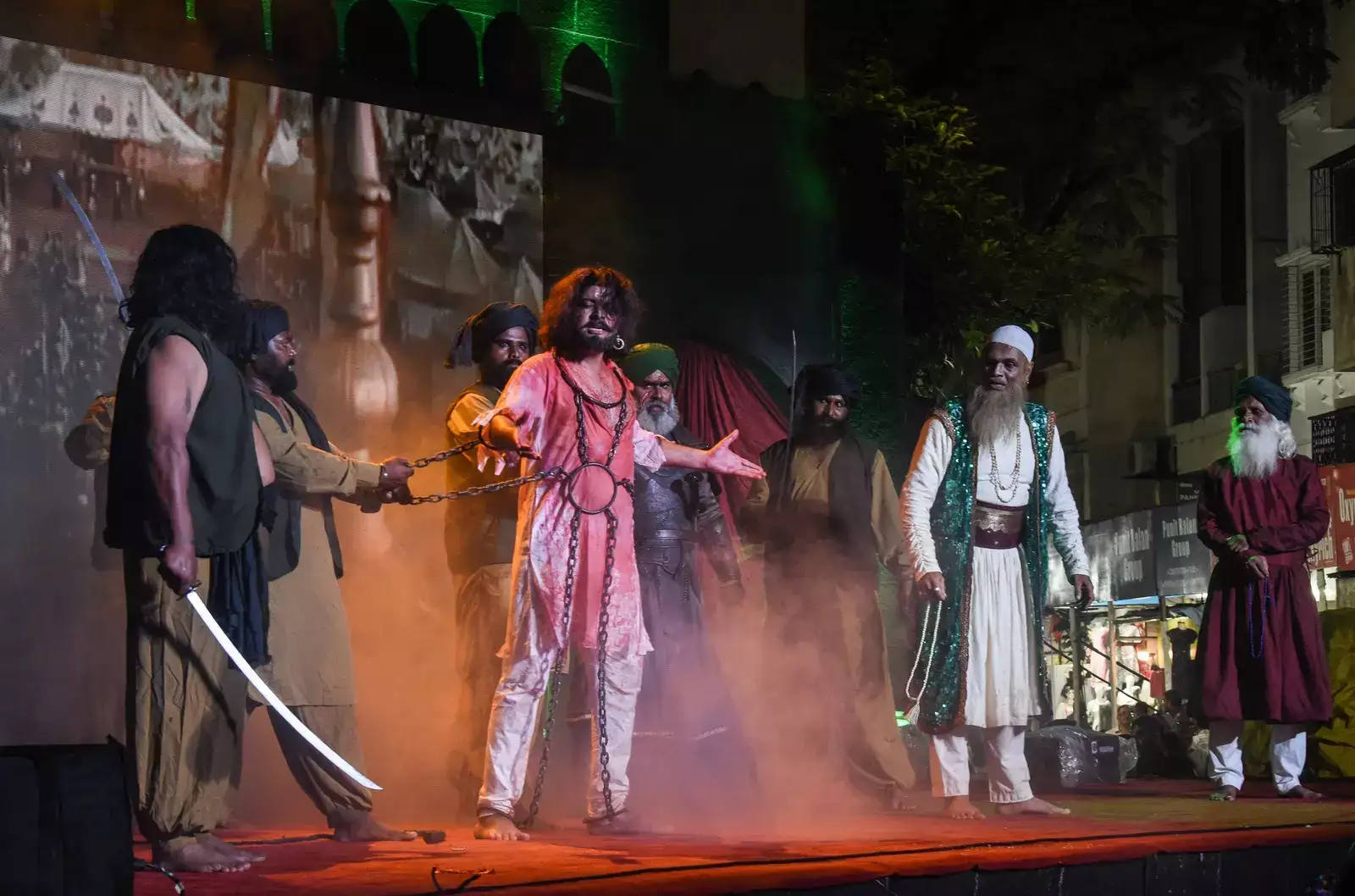
Nimbalkar Talim Mitra Mandal dekhava
One of this year’s biggest draws, this dekhava traces Chhatrapati Sambhaji Maharaj’s life and martyrdom, inspired by the film Chhaava. “Our lead actor zip lines 30 feet to the stage,” says Ganesh Buchade, from the mandal. With 15 performers, camels and horses, the 25-minute spectacle stirs both awe and emotion. “We wanted to give Pune something larger than life,” adds Rahul Katake, chairman of the mandal. Digvijay Mitra Mandal in Sadashiv Peth, too, is staging a dekhava on similar lines, informs the mandal’s chairman Prashant Chorge, adding, “We wanted to portray Sambhaji Maharaj’s bravery in a way that feels both grand and moving,” says Chorge.
Where
: Nagarkar Talim Mitra Mandal, Laxmi Road
What
: Marathi folk arts
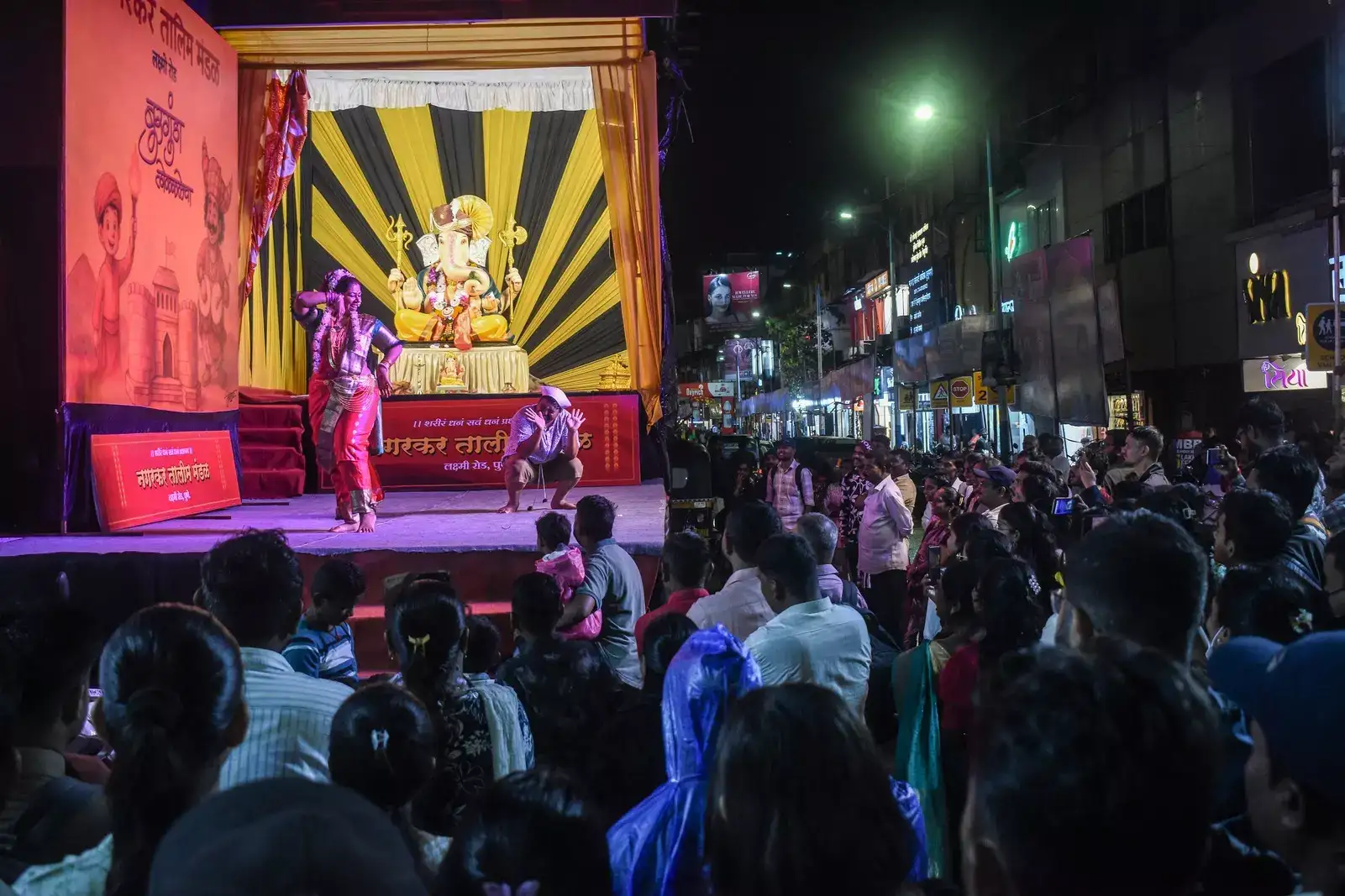
Nagarkar Talim Mitra Mandal dekhava
Breaking from history, this mandal highlights Maharashtrian folk forms woven with social messages. “We present social issues through our shows,” says Amit Zajale, from the mandal. The blend of tradition and awareness ensures devotion finds a contemporary voice.
Where
: Achanak Mitra Mandal, Paud Phata
What
: The battle of Sinhagad
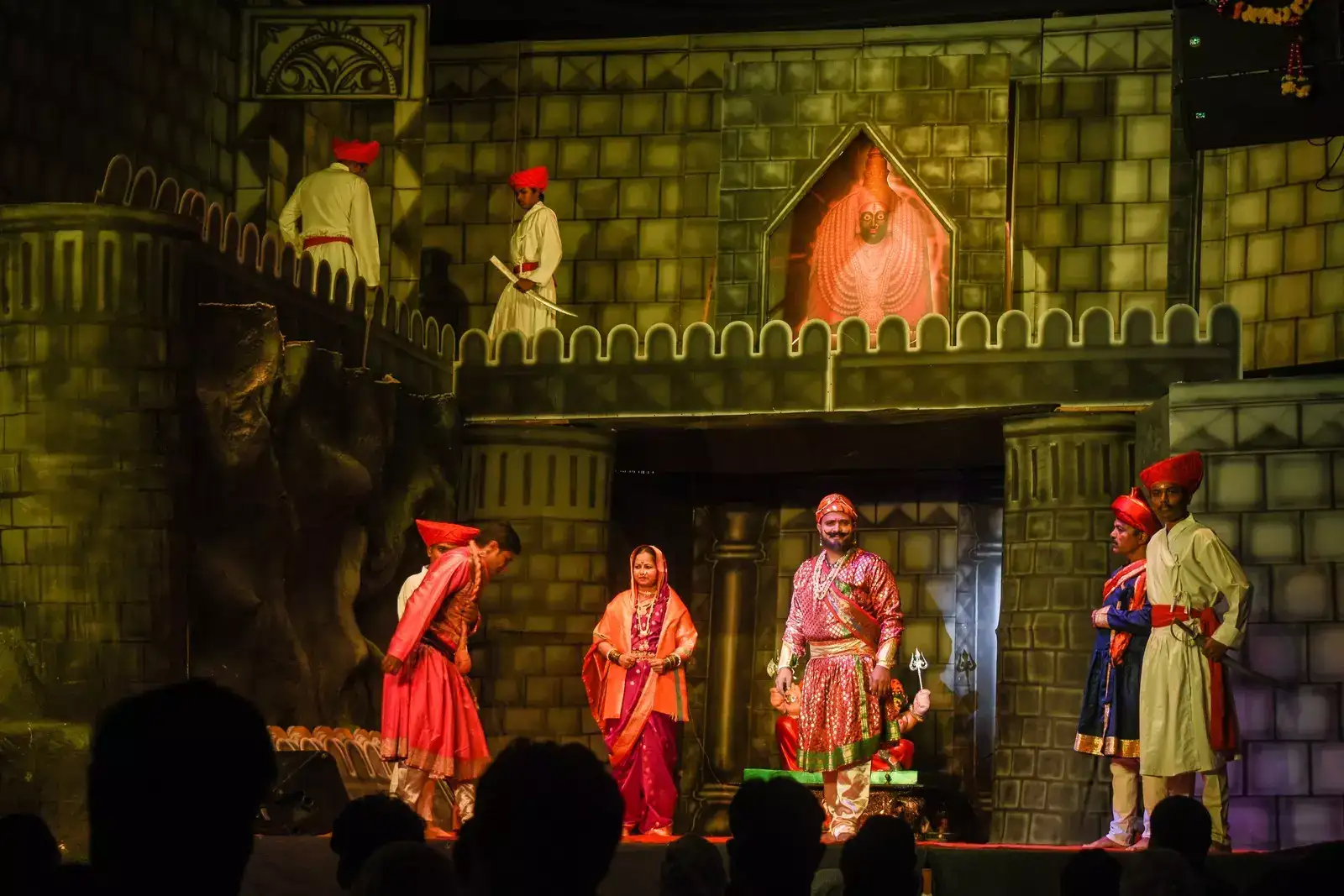
Achanak Mitra Mandal dekhava
Retelling the legendary battle of Tanaji Malusare at Kondhana (Sinhagad), the show depicts his bravery. “Our act captures Tanaji’s vow to Shivaji Maharaj, and his martyrdom,” says actor Atharva Bhilare. Through detailed sets and stirring performances, the story honours his duty and courage.
Where
: Navjawan Mitra Mandal, Sadashiv Peth
What
: Khandoba and Bhanu’s Wedding
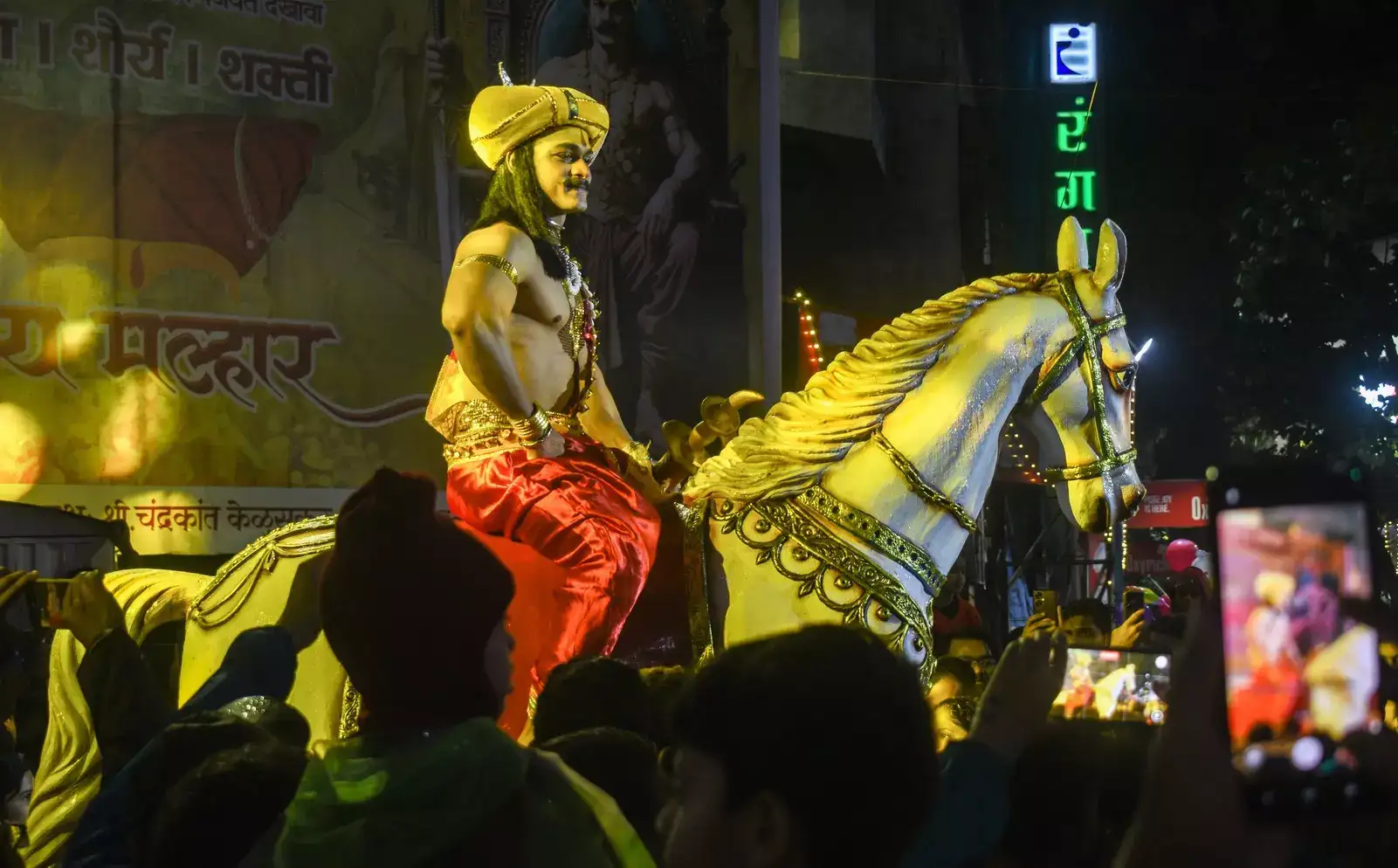
Navjawan Mitra Mandal dekhava
This divine wedding unfolds with a grand procession and Khandoba entry on a zip-line. Enriched with lok sangeet and cultural performances, the show retains authenticity. “We wanted to keep the tradition intact,” say writer-directors Rakesh Ramamkate and Shubham Sonar. With 26 performers and a 30-member crew, the 30-minute shows run multiple times daily.Pull Quote:“When I was around 20 years old, I was a karyakarta in a mandal. Moving dekhave were a big attraction back then, mostly religious and historical in nature. There were quite a number of them across Pune at the time. Some mandals would even build caves that told stories like the birth of Bappa.About 20 years later, live dekhave started becoming popular. They showcased a wide range of stories, religious, historical, cultural, even those connected to scientific developments. According to me, these shows give artists a wonderful stage to express their creativity. Through them, they also get to comment on social issues in a way that reaches everyone.Most of these traditions are still seen in the peth areas of Pune. That is where the roots lie. If you ask me about the significance, the answer is simple, tradition. Dekhavas are a way of passing on stories from our history to the new generation each year.”– Vasudeo Ekbote, Pune resident






